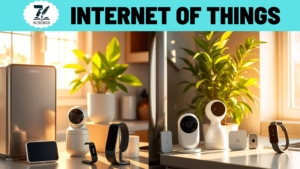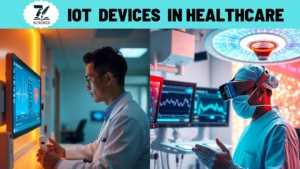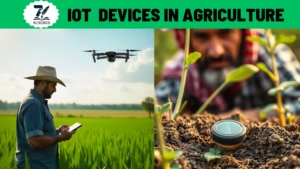The Internet of Things is one of the most advanced technology that has made human daily life a reality. It is an interconnected network that connects devices with the help of internet software and artificial sensors. This is how smart devices share data and communicate with each other. This source is making our lives better and more innovative, from various smart cities to factories.

A Brief History of IoT
The concept of IoT came into existence for the first time in the world when in 1980, researchers at Carnegie Mellon University experimented by connecting a coke vending machine to the internet. This helped them to know whether coke was available in the machine or not. They did a small experiment but because of this, today the changes that IoT has brought to the world are in front of our eyes.
Around the 2000s, a British technologist named Kevin Ashton derived the term “Internet of Things” while working on supply chain optimization technology. He later suggested that if we connect our devices to the Internet, then processes can become more efficient and better. Nowadays, IoT is getting better and more advanced. Today IoT is not just a concept but has become an integral part of the daily life of humans.
How Does IoT Work?
- Devices with Sensors: Smart devices are fitted with chips that sense and collect various data and they respond according to that data. Smart devices such as home security, smart refrigerators, etc.
- Data Transmission: When the data collection is done, the data is sent to the data center via the Internet using Wi-Fi, Bluetooth, or Zigbee protocols.
- Data Processing: Then the data is analyzed by cloud platforms and it gives relevant instructions against it.
- Action ExecutionThe IoT system can make decisions based on previously done analysis, such as security alarms, adjusting thermostats, etc.
Applications of IoT
Healthcare
In this modern era, IoT devices are also widely used in the medical field, due to which immediate treatment of critical patients has become possible.

Industrial Area
Internet of Things devices are also being used in industrial areas. These devices are very important in terms of security, so these devices are installed in industries so that they can monitor and warn of any threat.
Agriculture
Internet of Things devices are also increasingly being used in the agriculture sector. These devices are used to monitor crop health, weather conditions, and climate, which has led to an expansion in agriculture.

Benefits of IoT
- Efficiency: The Internet of Things has the potential to complete even difficult tasks in less time and with limited resources.
- Data-Driven Decisions: It also provides real-time insights for better decision-making.
- Cost Savings: Due to the small size of Internet of Things devices, we have to spend less money and its maintenance costs are also reduced.
- Enhanced Quality of Life: The Internet of Things makes our lives easier and safer as data is automated in devices.
Challenges of IoT
- Security Concerns: The first issue for IoT devices is security in this cyber age IoT devices are not completely safe from cyber attacks but we can make them secure to some extent.
- Data Privacy: IoT devices handle a lot of our private data can lead to privacy concerns.
- Interoperability: As each company uses its protocols to build IoT devices, it becomes difficult when all IoT devices are interoperable.
- High Implementation Costs: Whenever we buy any IoT devices, the initial cost to implement them can be high.
The Future of IoT
With the increasing use of Internet of Things devices in various fields of human life, we can expect that in the next few years, the number of users of IoT devices will not be in crores but in billions.
- Edge Computing: in the future, IoT devices will be so advanced that the devices themselves can analyze the data and give instructions instead of sending it to the server, which will reduce latency.
- AI Integration: In the coming times, it is also expected that IoT devices will be made smarter and more autonomous.
- 5G Connectivity: This means that reducing latency and transferring data with high speed will allow IoT devices to communicate much faster and in a better way.
- Sustainability: IoT devices also help in renewable energy and environmental protection, which will make these devices very popular in the future.
Read more
Unleashing the Power of Programming: Fueling Innovation and Growth
The Transformative Power of Research in Modern Society
A History of Modern Science How Curiosity Shaped the World
AI Programming Languages: Opportunities and Challenges Ahead
The Evolution of Communication: From Drumbeats to Digital